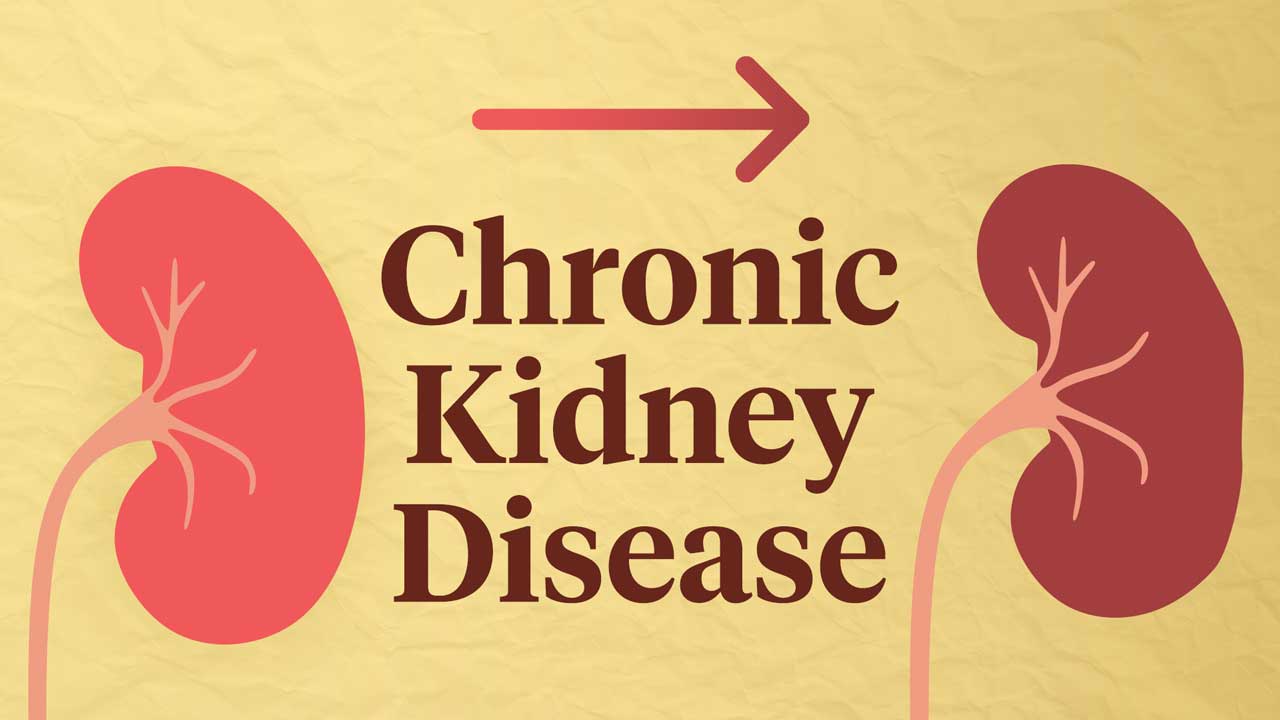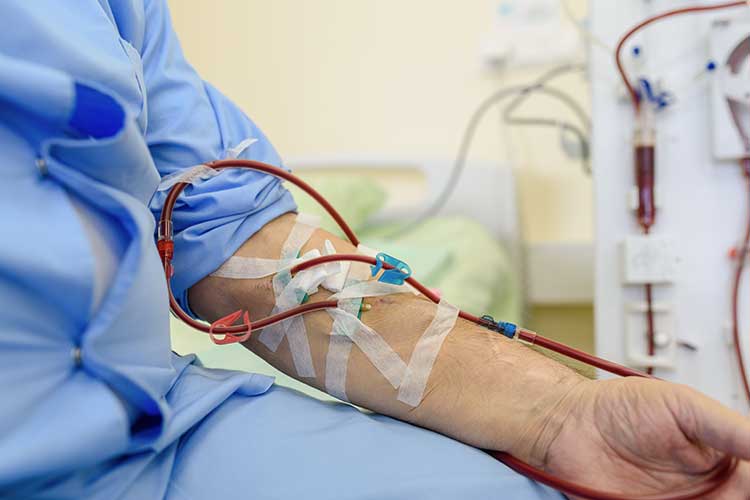Chronic Kidney Disease
Published: 01 May 2022

Published: 01 May 2022

According to data from the Australian Bureau of Statistics, about 10% of Australians over the age of 18, and 42% of those aged over 75, were displaying the biomedical signs of chronic kidney disease (CKD) in 2011-2012 (AIHW 2020).
Of those displaying biomedical signs of CKD, 97% were showing early stages (stages 1 to 3) of the disease (AIHW 2020).
CKD appears to be highly underdiagnosed, with the same data suggesting that among those displaying the biomedical signs of CKD, only 10% self-reported having the condition (AIHW 2020).
This is likely because CKD is a ‘silent’ illness that characteristically causes few or no symptoms, sometimes until 90% of kidney function has already been lost (Better Health Channel 2018).
However, while CKD is often detected too late to be reversible, it’s a mostly preventable condition due to many of its risk factors being modifiable (AIHW 2020).

Kidney Health Australia (2020) defines CKD as either one of the following:
The kidneys, which are located on each side of the backbone below the ribs, are two organs responsible for filtering waste from the blood and excreting it via urine (Healthdirect 2020).
If the kidneys are damaged and not functioning properly, fluid and waste accumulate in the body instead of being expelled (Healthdirect 2021). This may lead to a variety of complications such as hypertension, anaemia, weak bones, poor nutrition and nerve damage. If CKD continues to progress, it may eventually lead to kidney failure, requiring the patient to undergo dialysis or a kidney transplant (NKF 2022a).
The most common cause of CKD in Australia is diabetes, which accounts for about 38% of cases (AIHW 2020). This is known as diabetic nephropathy and occurs when high levels of blood sugar damage the glomeruli (filtering units in the kidneys) over time, impairing their ability to filter waste (Healthdirect 2021; NKF 2022a).
CKD can also be caused by:
(NKF 2022; Mayo Clinic 2021; AIHW 2020)
Risk Factors for CKD include:
(Kidney Health Australia 2020)
Aboriginal and Torres Strait Islander Peoples are twice as likely to experience CKD than non-Indigenous people (Kidney Health Australia 2020), and five times more likely to experience end-stage kidney failure. The reasons for this are multifactorial, but appear to be related to a faster decline in GFR than in non-Indigenous people, socioeconomic disadvantage and living in remote areas (NACCHO 2018).
There are typically few or no symptoms in the early stages of CKD. In later stages, the patient may experience:
(Healthdirect 2021; Better Health Channel 2018)
CKD can cause a variety of complications, including:
(Healthdirect 2021; Mayo Clinic 2021; NKF 2015)

There are three essential components to diagnosing CKD:
(Kidney Health Australia 2020)
A routine kidney health check should be offered to patients with any of the risk factors for CKD. This assessment should be performed every one to two years (annually for those with diabetes or hypertension) (Kidney Health Australia 2020).
A kidney health check comprises an estimated glomerular filtration rate (eGFR) blood test to measure kidney function and a urine albumin-to-creatinine ratio (urine ACR) test to measure the amount of albumin in the urine (Kidney Health Australia 2020; Better Health Channel 2018).
An eGFR involves taking a blood sample from a vein in the arm, which is then used to calculate how well the kidneys are filtering certain agents produced by the body. Typically, it involves measuring creatinine levels in the blood (NKF 20222b).
If the patient returns an abnormal eGFR result (less than 60 mL/min/1.73m2), the test should be performed again within seven days. If there is a further ≥20% reduction in eGFR, this may indicate acute kidney injury. However, if the eGFR is still reduced but stable, the test should be repeated two more times within three months. If all three tests show reduced eGFR, this is an indication of CKD (Kidney Health Australia 2020).
If the patient returns an abnormal urine ACR result (≥2.5mg/mmol in males and ≥3.5 mg/mmol in females), the test should be performed two more times within the next three months. If at least two out of three tests show an elevated urine ACR, this is also an indication of CKD (Kidney Health Australia 2020).
The patient’s eGFR and urine ACR can then be combined:
| Albuminuria Stage | ||||
| Kidney Function Stage | GFR | Normal Male: <2.5 Female: <3.5 |
Microalbuminuria Male: 2.5-25 Female: 3.5-35 |
Macroalbuminuria Male: >25 Female: >35 |
| 1 | ≥90 | Not CKD unless haematuria, structural or pathological abnormalities present | ||
| 2 | 60-89 | |||
| 3a | 45-59 | |||
| 3b | 30-44 | |||
| 4 | 15-29 | |||
| 5 | under 15 or on dialysis | |||
(Adapted from Kidney Health Australia 2020)
Each coloured area (yellow, orange or red) requires a different management strategy. For more information, see Kidney Health Australia’s guidelines on Chronic Kidney Disease (CKD) Management in Primary Care.
Once the patient’s kidney function stage and albuminuria stage have been identified, further investigations to determine the underlying cause of the CKD will need to be performed (Kidney Health Australia 2020).
These may include:
(Better Health Channel 2018; Healthdirect 2021)
First-line management for CKD is lifestyle modification, including:
(Kidney Health Australia 2020; Healthdirect 2021)
In stages 3 or 4, the patient may require additional medicines or adjusted dosages, and possibly, referral to a nephrologist if indicated. Symptoms or complications should be addressed as appropriate (Kidney Health Australia 2020; Healthdirect 2021).
In stages 4 or 5, the kidneys may be unable to function on their own. Once the kidneys fail, the patient will require renal replacement therapy (dialysis and/or a kidney transplant). They may also undergo Renal Supportive Care (RSC) - a combination of renal medicine and palliative care - to help them manage their symptoms and live as comfortably as possible (Kidney Health Australia 2020; Healthdirect 2021).

CKD is a largely preventable condition (AIHW 2020). The risk can be reduced by making lifestyle changes, including:
(Healthdirect 2021)
Question 1 of 3
At least how long do the features of chronic kidney disease need to be present for to be considered chronic?